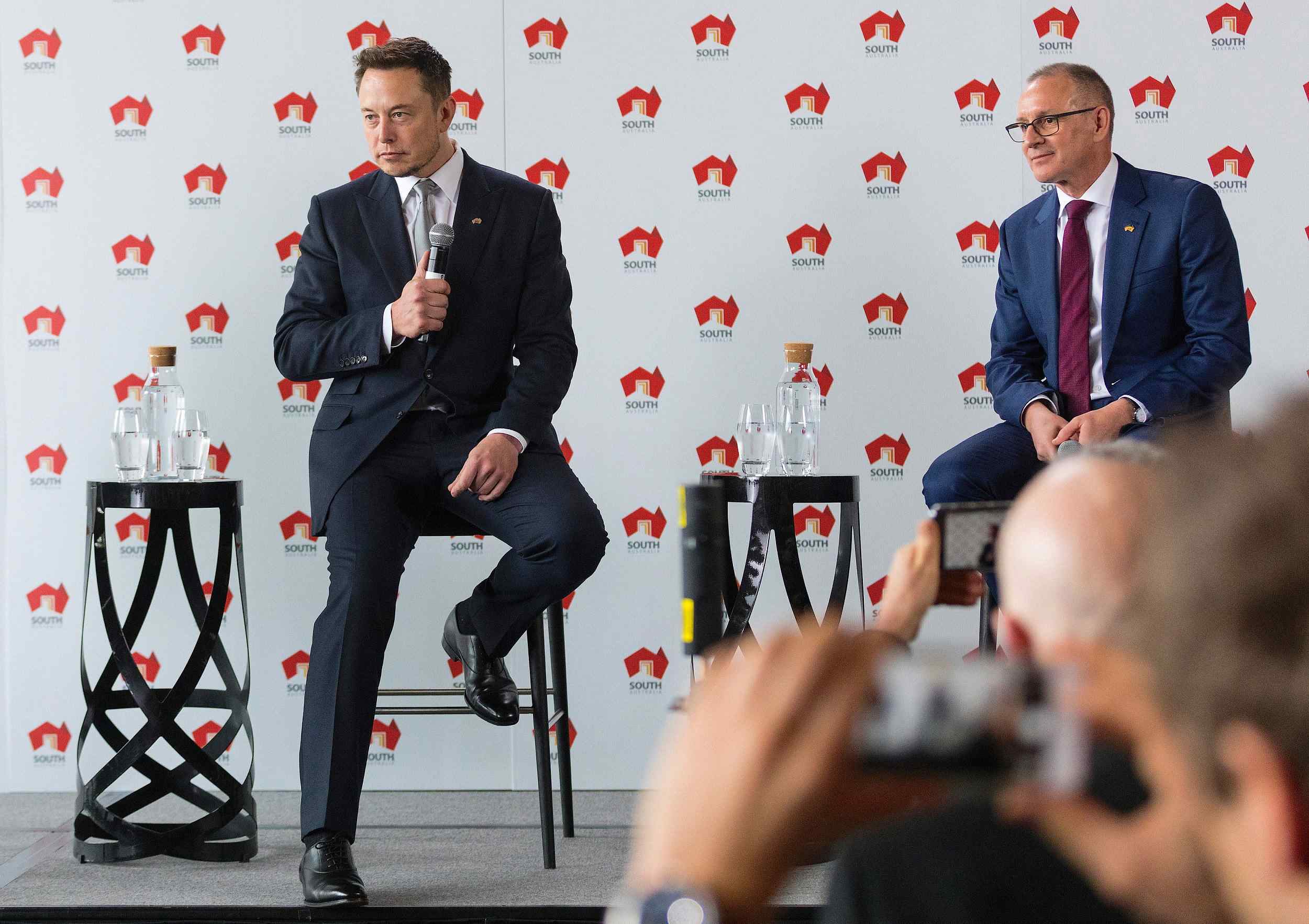
Tech & Sci
22:11, 07-Jul-2017
Tesla to build giant lithium-ion battery in Australia

Tesla, US electric car maker,
has won an Australian contract to install the world's biggest
grid-scale battery, in what experts say will be a litmus test for the
reliability of large-scale renewable energy.
Tesla's
CEO Elon Musk, known for his bold approach to cars, clean energy and
space exploration, trumped dozens of competing proposals to build the
gigantic lithium-ion battery that will serve as emergency back-up power
for South Australia – a state racked by outages.
But
under the agreement, Tesla must deliver the 100-MW battery within 100
days of the contract being signed or it will be free – a commitment Musk
made in a Tweet in March.
"There
will be a lot of people that will look at this – 'Did they get it done
within 100 days? Did it work?'" Musk told reporters in South Australia's
capital city of Adelaide.
"We are going to make sure it does."
The
battery, designed to light up 30,000 homes if there is a blackout, will
be built on a wind farm operated by France's Neoen – parts of which are
still under construction.

Musk's in talks to build the world's biggest lithium-ion battery. /VCG Photo
Musk's in talks to build the world's biggest lithium-ion battery. /VCG Photo
Musk said failing to deliver the project in time would cost his company "50 million dollars or more," without elaborating.
It
will be the largest lithium-ion battery storage project in the world,
overtaking an 80 megawatt-hour facility in California, also built using
Tesla batteries.
Over the
last three years, South Australia has decided to shut down its
coal-fired power stations and instead rely on wind, solar and gas. In
particular it has raced ahead of the rest of the country in turning to
wind power, which supplies 40 percent of its energy.
The
move has been applauded by environmentalists but left the state prone
to outages as there is no way to store enough energy when the wind
doesn't blow. In September, South Australia's 1.7 million residents were
left without power, some of them for up to two weeks, when the grid
overloaded and collapsed.
The battery is aimed at getting around the problem of inadequate storage.
"Cost-effective
storage of electrical energy is the only problem holding us back from
getting all of our power from wind and solar," said Ian Lowe a professor
of science at Australia's Griffith University.
"This project is a significant innovation to demonstrate the feasibility of large-scale storage."

South Australia's Premier Jay Weatherill (L) and Tesla Motors CEO Elon Musk (R) at an announcement in Adelaide. /VCG Photo
South Australia's Premier Jay Weatherill (L) and Tesla Motors CEO Elon Musk (R) at an announcement in Adelaide. /VCG Photo
Lithium Ambitions
Dozens of companies from 10 countries, including privately owned Lyon Group, working with US power company AES Corp (AES), expressed interest in the project.
Now the sector is waiting to see if Musk can make good on his promise.
"Tesla
has been telling the world that it can and will finish the project
within three months, said a source at a Korean competitor to Tesla,
declining to be identified due to the sensitivity of the matter.
"It
seems that confidence helped Tesla win, but typically this kind of
project takes six months so we have to wait and see whether or not Tesla
can do it," the source said.
Lithium-ion
batteries have been in widespread use since about 1991, but mostly on a
small scale, such as in laptops and cell phones. A typical lithium-ion
battery can store 150 watt-hours of electricity in one kilogram of
battery, representing more than double the capacity of nickel batteries.

The car brand Tesla /VCG Photo
The car brand Tesla /VCG Photo
For
their proponents who have long been pushing for grander use, the
success of Musk's big South Australian experiment will be key to greater
acceptance.
"For lithium
technology to take off on a global scale, they clearly need the storage
capacity to make sure renewables can deliver 24 hours a day, seven days
a week," said Adrian Griffin, a geologist who specializes in lithium
extraction.
(Source: Reuters)
8634km

SITEMAP
Copyright © 2018 CGTN. Beijing ICP prepared NO.16065310-3
Copyright © 2018 CGTN. Beijing ICP prepared NO.16065310-3